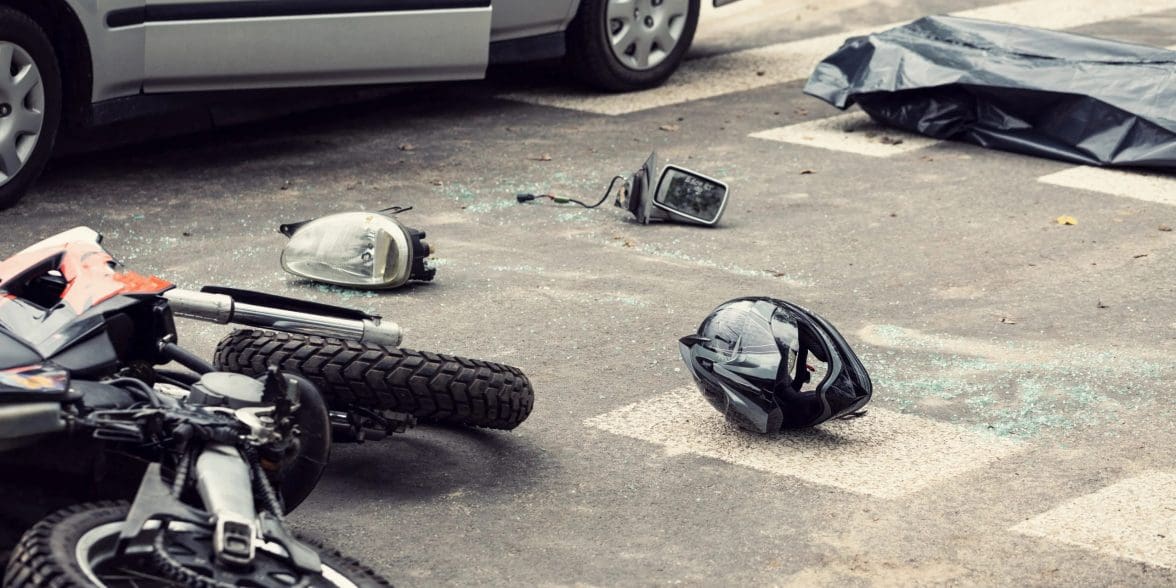To those that follow the news about new and exciting motorcycle technologies, crashing is often the furthest thing from one’s mind. Indeed, many of the latest and greatest technological innovations are focusing on preventing crashes, either through new and updated traction control systems, anti-wheelie systems, and the like. This is why Honda’s latest patent application in Japan is such an important one.
Many bikes from manufacturers like Kawasaki, BMW, and Triumph, among others, already have automatic emergency call systems on them. These operate on the concept of accelerometers detecting a very rapid stop, the bike on its side after moving at speed, and such to connect to the rider’s smartphone and send out an SOS. Some of the latest Android and iOS smartphones now also have their own crash detection systems using accelerometers much like the bikes do.
Honda’s new technology, however, is an ingenious translation of a system that came from their automotive branch to motorcycles.
How The Idea Migrated From Cars
In the first days of crash-detection-and-mitigation systems in cars, in the latter half of the 1990s, things were very binary, in terms of “are any of my sensors out of place or missing, and if so, call emergency services.”. Technologies such as General Motors’ OnStar system were among the first, and many of them required, and still do require, a subscription as many are able to reach a human, 24/7/365, when you press their respective service buttons.
As the technologies evolved, the high tech nature of Japan and its culture took the idea and took it to the next level. Honda, for their part, helped develop driver monitoring systems, sensors that didn’t look outwards at the road, but inwards at the driver, to check for eye movement, the subtle movement of breathing, where the driver’s face was pointed, and the like, systems that you will find in a lot of the higher end cars coming from the island nation.
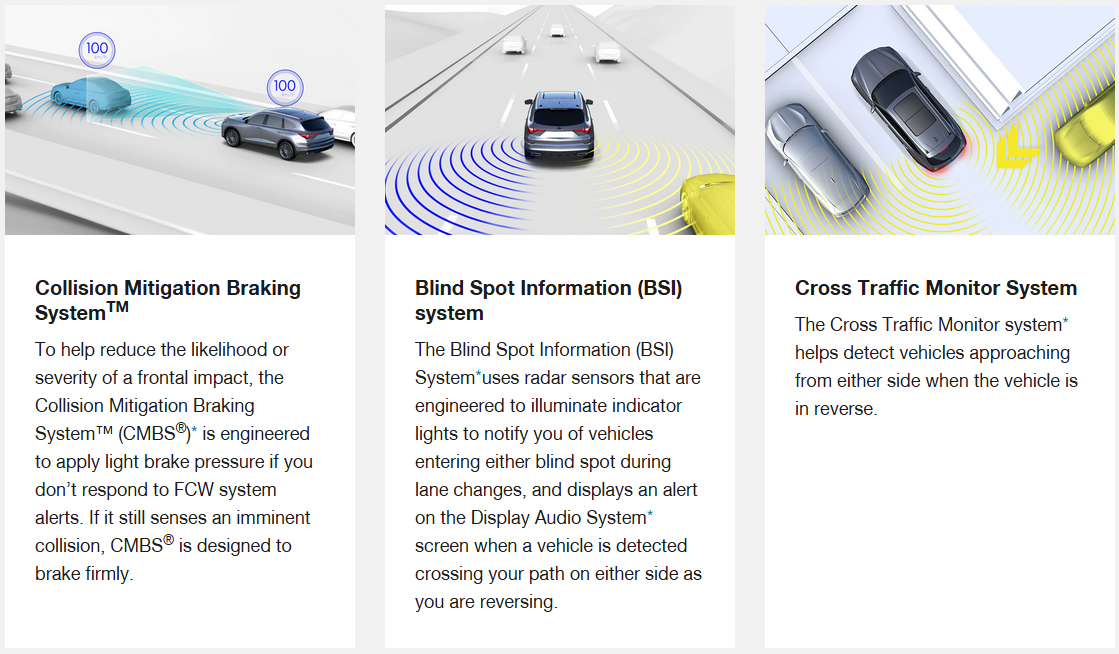
Today, cars have a multitude of sensors, lane keeping assist, blind spot assist, collision mitigation and avoidance systems that can turn the car and brake harder and faster than a human, yet motorcycles are still very much in the hands of the rider. If a bike suddenly applied the brakes to avoid a collision, odds are you’d be wondering why everything is spinning as you go sailing through the air. The bike can certainly help with braking, through ABS, stability control, traction control, and the like, but a crash detection system is still in its infancy on bikes.
Then along comes Honda, with an idea that is so common sense it’s a wonder that no-one else applied for a patent first, that we expect to be copied by almost every manufacturer out there. They have taken the idea of the driver-oriented sensor and applied it to a motorcycle, and if the driver has paired their phone to their Honda bike, then it will also intelligently use the sensors there to help make a determination if a collision has happened, if the rider may be injured, and call for help on its own.
How The System Works
Think about what the modern rider commonly has with them when they want a little right wrist action. Firstly, their gear, including a helmet, and quite often those helmets will have some type of comms system installed. Next, riders will very likely have their smartphone with them, paired to the bike and/or the helmet comms, so they can listen to music, track their mileage and stats from the bike, and the like. Lastly, humans, by the nature of being made out of stuff, have mass (with some of us having more mass than others!).
So, when you swing a leg over the bike, the first thing that activates is the mass sensor. That is the driver oriented part that will determine if there is a butt in the seat, hands on handlebars, and that any paired bluetooth devices are within an acceptable centerline of the bike’s sensor field.
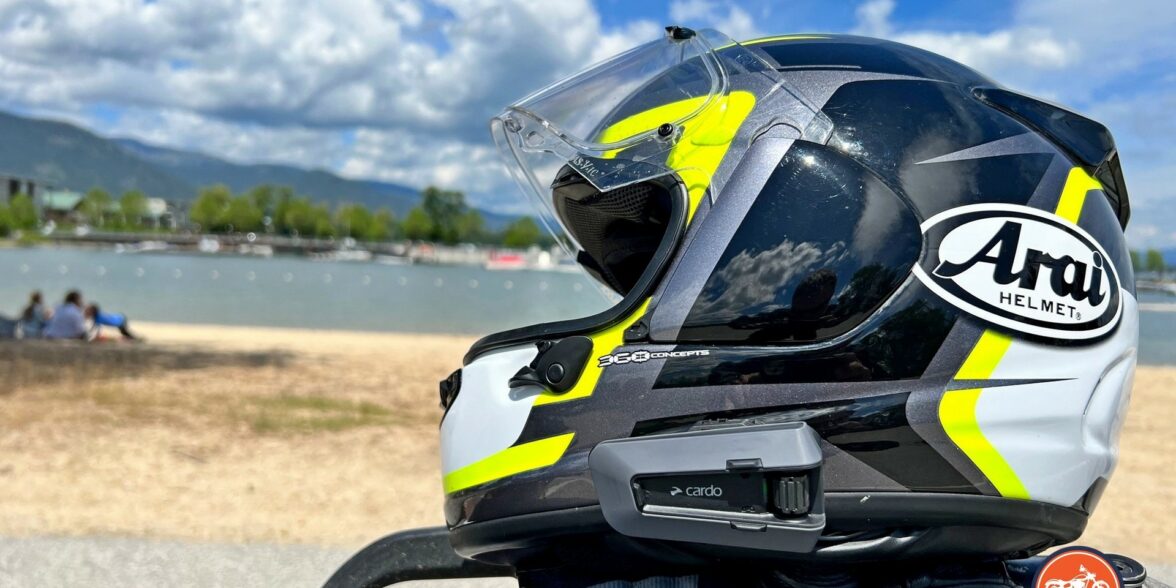
The second thing that activates is when you’re rolling along, the system is constantly checking lean angle and the presence of the bluetooth signals within safe limits. Since you can get pretty far over on a bike, up to 50 degrees using some ultra-sticky racing tires, the system won’t flag a warning unless “unnatural” angles are detected, like 70 to 80 degrees of lean.
Combined with that lean sensor is the polling of bluetooth devices nearby, paired or not. Every bluetooth signal has its own identifier coded into it, so the bike will “learn” what yours is even if you don’t pair it. If the bike detects a lean of 80 degrees, but the bluetooth signal is moving and at an appropriate height to be considered “standing,” then it won’t activate the emergency call feature. This is the key difference between the current systems, that might call an ambulance for you if you drop your bike and are standing there over it cursing up a storm.

The intelligent part of the system kicks in should the bike detect a very sudden lean while at speed, the bike spinning or flipping, or coming to a stop that could only be caused by hitting something, and it detects that the mass sensor is not reporting any pressure on the grips or butt in the seat, then it will trigger its emergency calling algorithm. Part of that algorithm is the second, and truly brilliant part of the system, in that if a rider is okay after coming off the bike, the first thing that any rider will do is run over to their bike to kill the ignition. The sensor, which is buried down near the engine to be as far away from any potential damage as possible, will detect the memorized bluetooth signal coming over, meaning the rider is up and moving, and won’t automatically call for help.
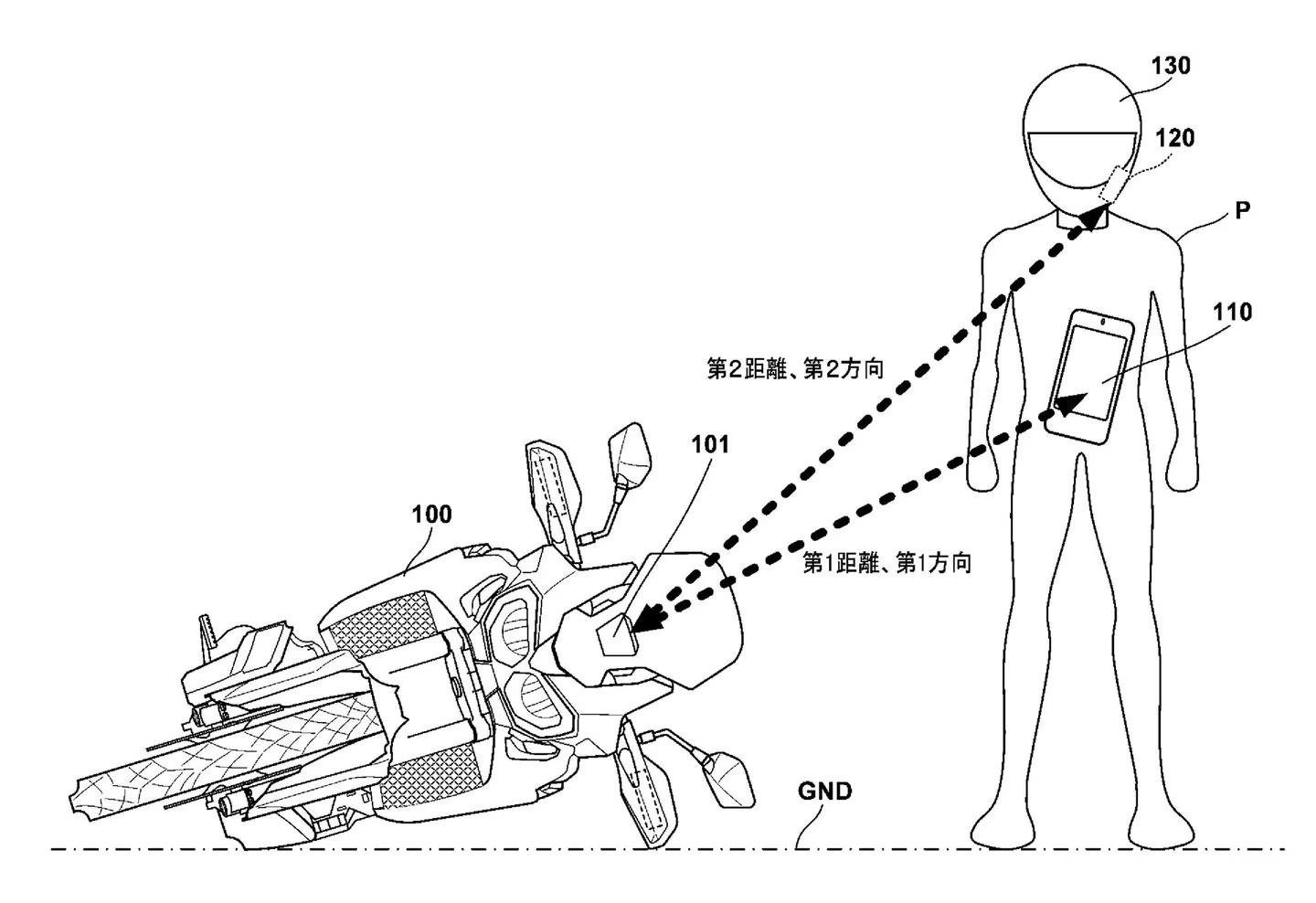
If the sensor detects a crash, and also detects that the bluetooth signals it is familiar with are below what could be considered “upright,” separated by distance from the bike’s immediate sensor field, and are not moving or only moving a little bit but still adjacent to each other, such as a rider rocking back and forth holding a broken arm, then the system will proceed with prompting the rider, should the phone be paired, if they want emergency call for help.

The most urgent of the calls, however, happens if the bike detects a lean, and that the bluetooth signals are both not moving or one of them is missing, and critically no longer adjacent to each other, then it will immediately proceed with an emergency call. This can happen should a comms transmitter be destroyed by a helmet impact on the side where it is installed, your phone coming out of your gear or off its mount, or more worryingly if your helmet has come off during the crash, meaning you are very likely unconscious with a potentially life threatening head injury.
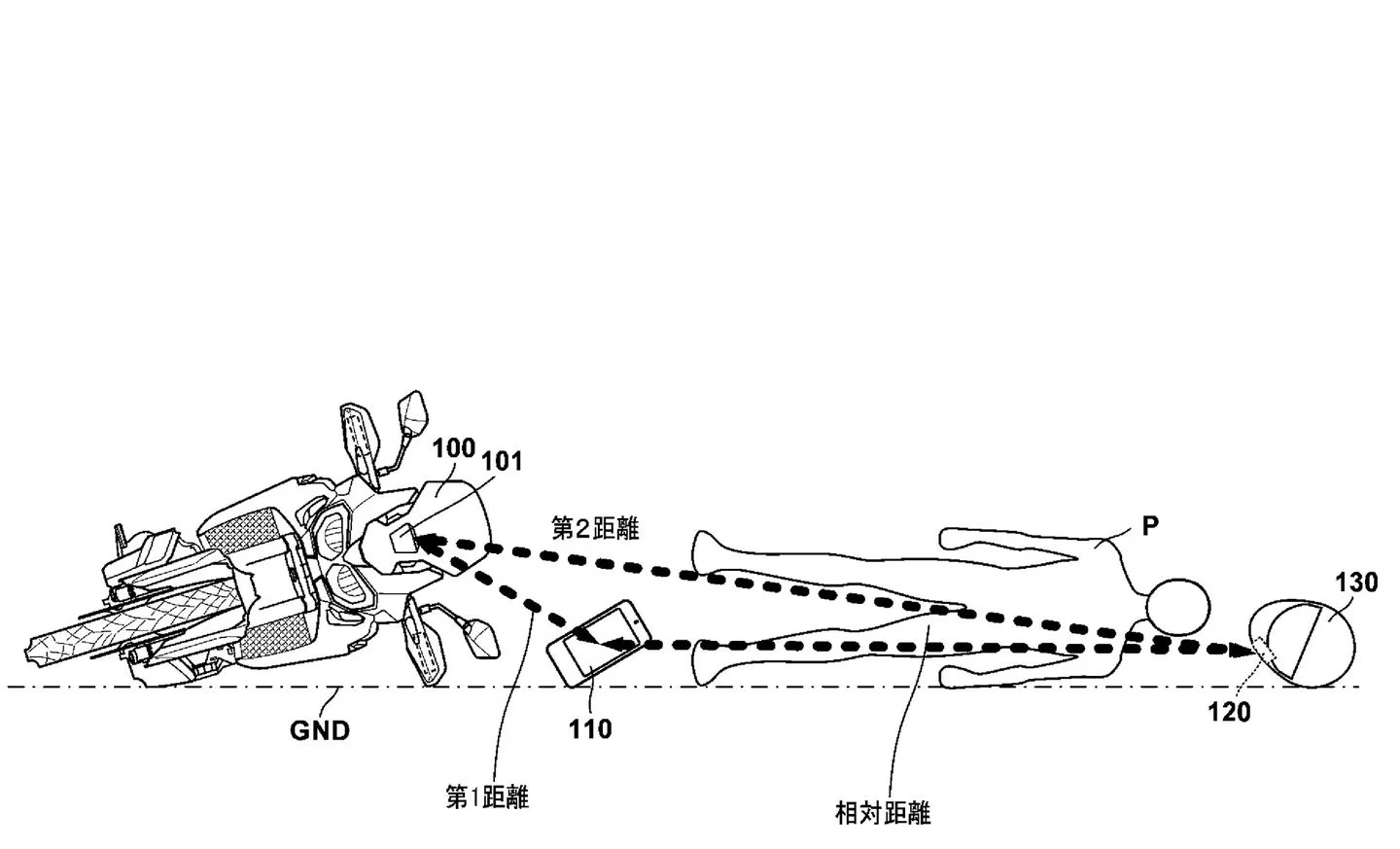
Keep in mind, this is an extremely simplified version of the technology described in the patent application, which is as long as a short novella. It is also still in the patent application stage, and right now works only with certain, more recent bluetooth signals, such as 4.0 and above. Since many modern bikes, smartphones, and comms devices can pair to more than one device, it only goes to show how an everyday item that we don’t usually think about, such as our phones, can suddenly become an integral part of a safety system.
What This Could Lead To In The Future
It is not beyond doubt to claim that we, the human race, are a very wired up species. If you’re in a position to be able to afford a new bike, it is almost certain, in the range of 90 to 95%, that you will also own some form of smartphone. That phone can be used to make calls (shocking, we know!), but is more often used to check your social media feeds, send or receive emails, find the nearest chinese fast food restaurant using GPS, and the like. When we’re riding, we also usually have a comms system to chat with other riders, or make/receive phone calls.
As technology improves exponentially year after year, it is not outside the realm of possibility that in the near future, our very clothes might have integrated sensors in them, such as a gym shirt having a built in heart rate sensor that is powered off of your body heat, or a motorcycle jacket that has a three point sensor system that determines if its built-in airbag needs to be deployed or not. Both of those technologies, it may interest you to know, already exist.
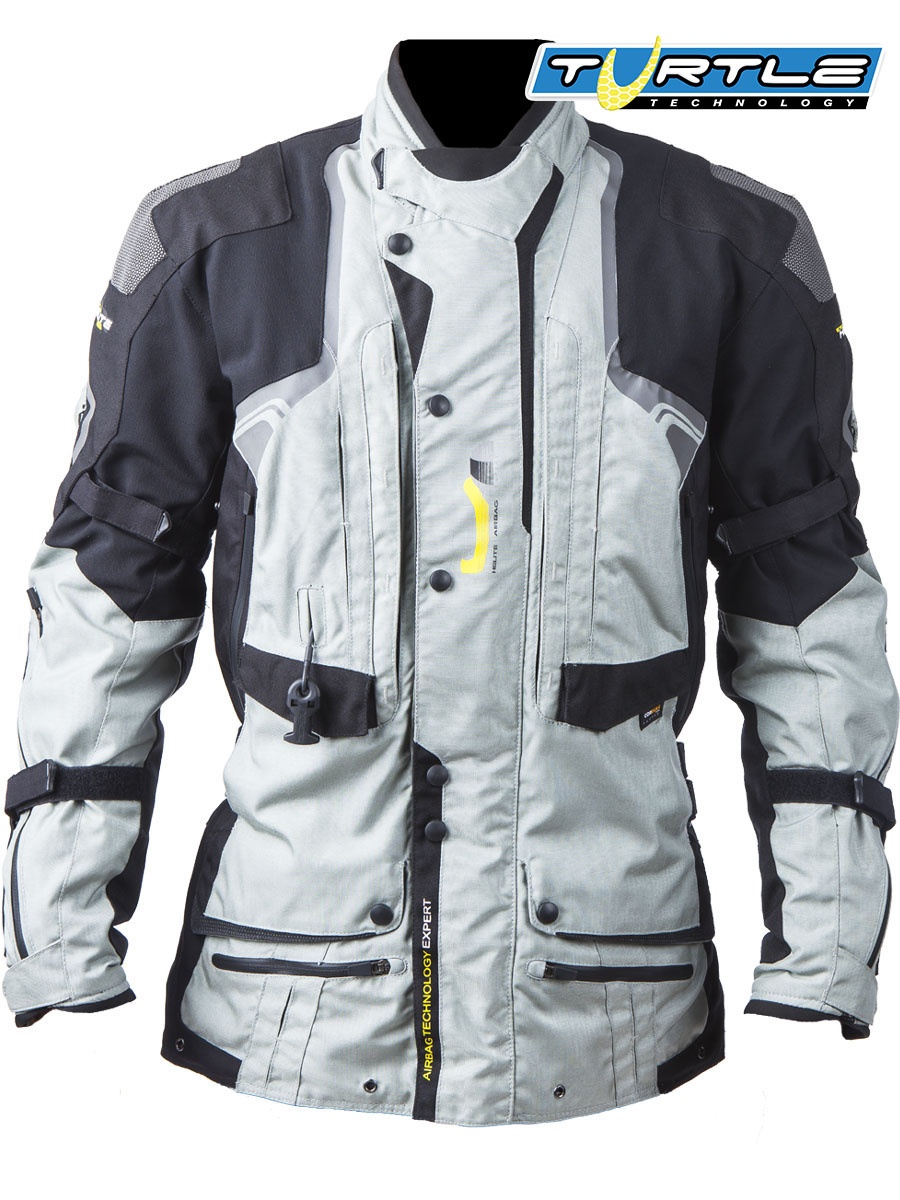
By connecting more systems and features to our phones, so that our bikes can access them as well, not only could the crash detection systems of the future simply call for help, but also be able to give up to date vital statistics such as the rider’s breathing and pulse rate, and if the airbag in the jacket deployed or not. Integrated dash sensors and cameras could also constantly check for something mostly human shaped in their fields of view, along with the mass sensors, to determine if the rider is with the bike or not.
There hasn’t been a revolution in bike crash detection in a long time, and Honda is definitely on the right path to causing one such revolution with this patent application. We only hope that they realize what this could mean for riders as a whole, and allow others to buy their system to use in their bikes, or build their own ideas of the system. No matter what, however, we are all for technologies that keep us riders safer, especially if it doesn’t compromise the riding experience and is unobtrusive.


